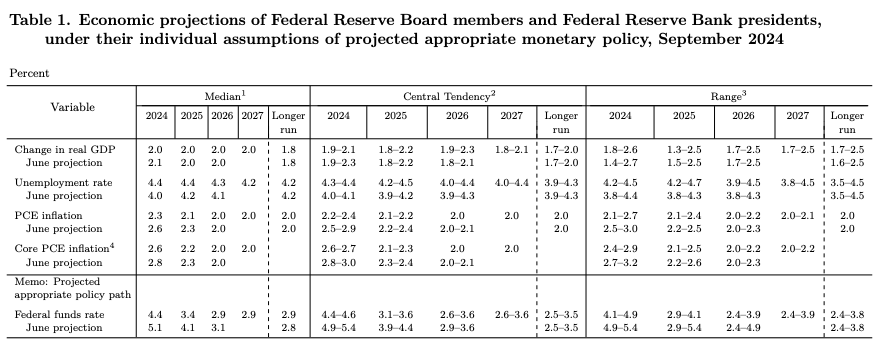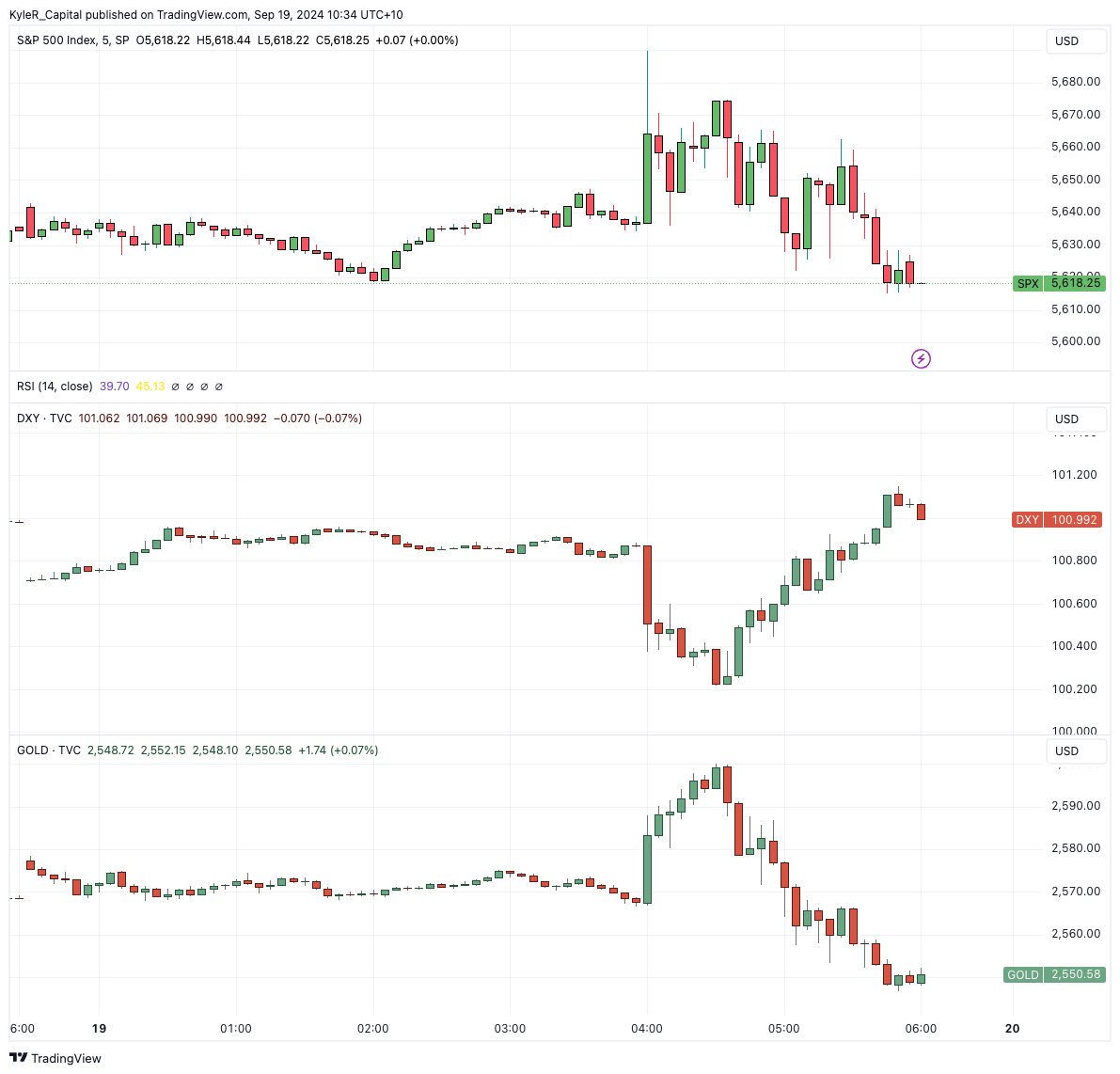FOMC Decision Review: A 50 point cut but the markets responded in a mixed fashion
Discover the US Federal Reserve’s latest 50 basis point cut and how the markets reacted. Stocks surged, the US Dollar fell, and the Fed hints at more aggressive cuts ahead.
What did the US Federal Reserve do?
The Fed cut by 50 basis points, in a move normally reserved for financial turmoil or an economic shock. Stocks surged to record highs following the decision, while the US Dollar fell below the 100 level and gold tested $2600. In a very unusual move, perhaps indicative of the reactiveness of the Fed recently, there was one dissenter to the move, Michelle Bowman, who wanted a 25 point cut. Nevertheless, the dot plots implied general expectations of more aggressive cuts from here: another 50 basis point cuts before the end of the year, with another 100 projected by the median dot in 2025. These forecasts were underpinned by a jobless rate tipped to rise to 4.4% this year before stopping and holding steady. Inflation forecasts were lowered with core PCE forecast to come close to target by next year.

(Source: US Federal Reserve)
How did the markets respond?
Despite ostensibly giving what the market wanted, price action shifted during the press conference. Stocks pared gains, Dollar bounced, and gold fell for the session. It’s hard to pinpoint a precise message from Chairperson Powell that set-off the reversal. Most questions were about whether there should be a signal inferred from the Fed about a weaker labour market and growth slow down. Powell used the word "recalibration" about policy and tried to project confidence about the outlook. There was also a question or two about whether this signals mission accomplished about controlling inflation. The markets hit a wall during questions about the labour market, irrespective of the answer. It’s perhaps a hint about subtle changes in the narrative and that we are about to see the story change about the labour market and greater pessimism in the markets as a result.

(Past performance is not a reliable indicator of future results)
(Source: Trading View)
Why did the markets respond this way?
There are two possible reasons why the markets may have turned risk-off following the decision. The decision to cut rates and aggressively lower the dots plots may have stoked fears about a severe economic slowdown, especially given Powell’s difficulty in forming a coherent narrative reconciling such rapid easing with reassurances that the labour market remains resilient. However, a look at the rates futures curve, another possible answer for why stocks dropped and the Dollar rebounded may be the fact the dot plots pointed to a flatter rates curve than what's priced in. There were 10 baked in by next year, dot plots point to "only" eight. It reaffirms the dilemma the Fed confronts in this easing cycle: it has to come to the proverbial party and deliver guidance in sympathy with market expectations, while simultaneously framing a positive narrative about an economy that will see only modest weakening in the jobs market.
What comes next for US monetary policy?
Despite arguably deviating from this principle by cutting rates by 50 basis points, Chairperson Powell asserted that future rate cuts remain data dependent. A focus will remain on whether there’s signs of continued deterioration in labour market conditions, with a rise in the jobless rate above 4.4% – the level that the Fed has projected the unemployment rate to peak at – a possible amber signal that the economy is weakening more than expected. As it relates to the markets, there remains a divergence between interest rate futures and the FOMC’s dot plots, meaning that along with the growth outlook, the path for policy will also inform the future performance of US equities along with the directional bias of the US Dollar.